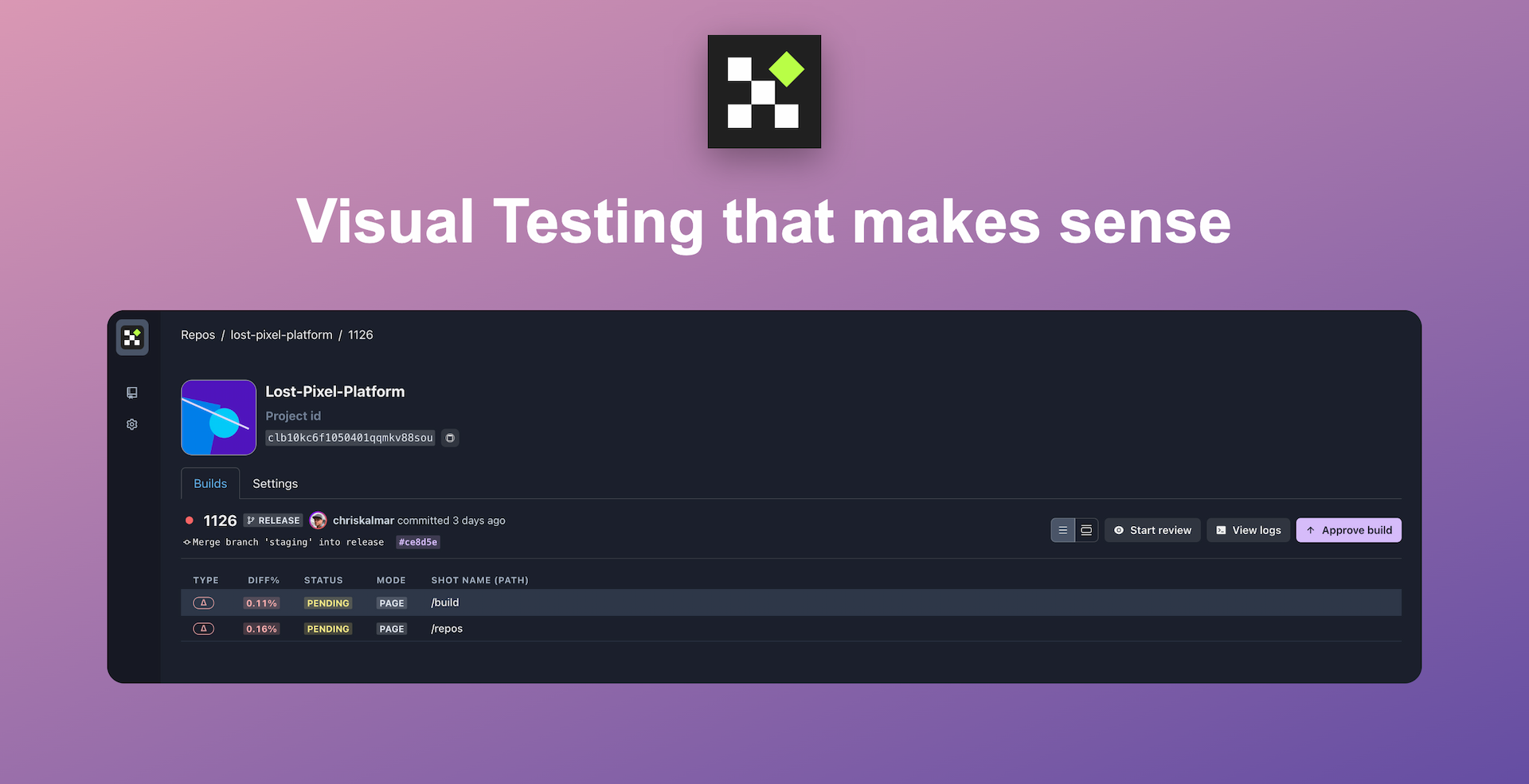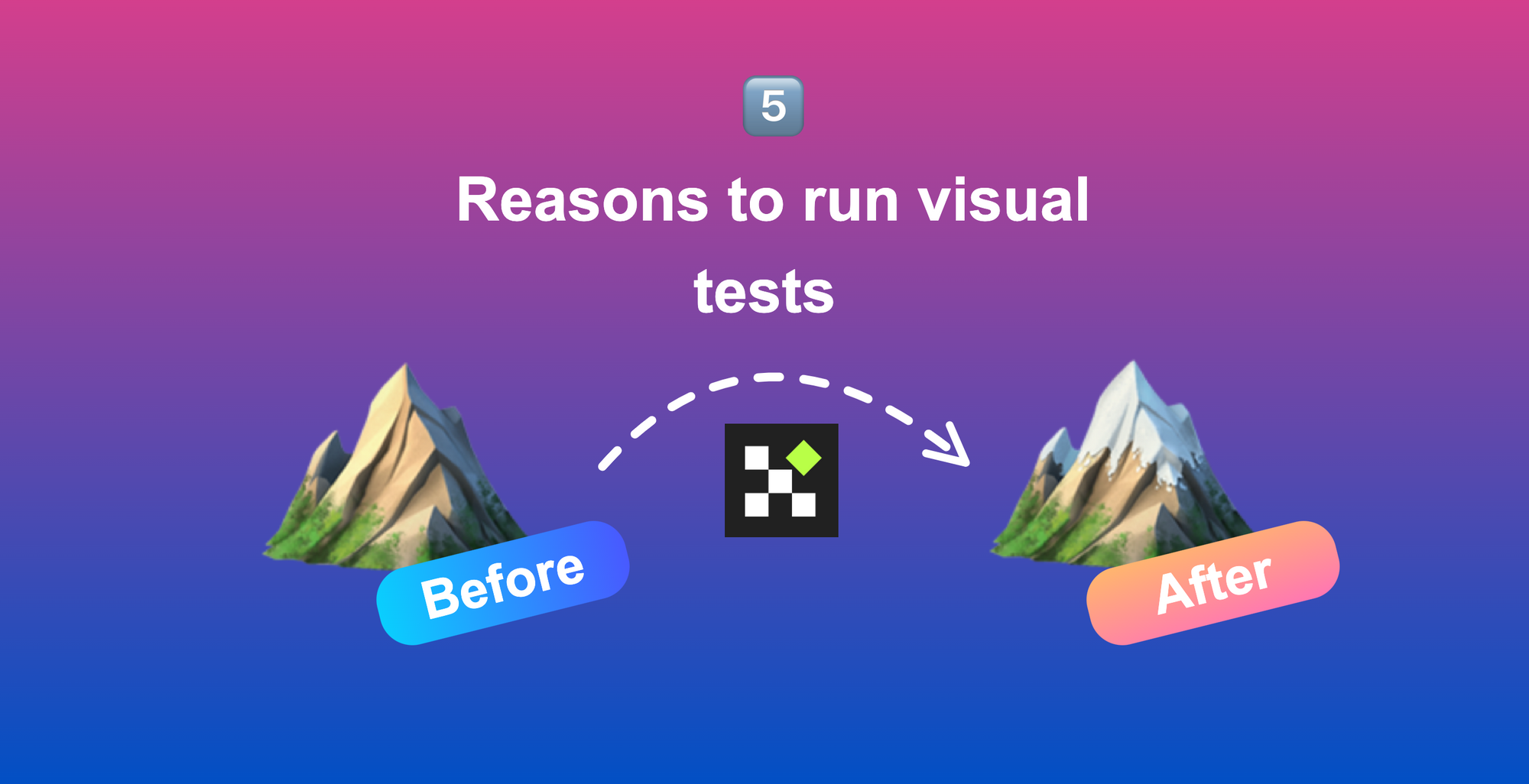Introduction ✨
Visual regression testing is a critical aspect of modern web development that helps ensure that code changes don't break the intended design and functionality of a website or application.
In this blog post, we'll discuss five compelling reasons why every development team should invest in writing visual regression tests. From improved efficiency and reduced time to market to enhanced user experience and increased collaboration, the benefits of visual regression testing are many. Keep reading to learn more about how visual regression testing can help your team produce better code and ship it more frequently to customers without fear of regressions.
#1 Efficiency 👟
Visual regression tests automate the process of verifying UI changes, reducing the time and effort required to manually test each change. There are multiple stages of how advanced your setup could be but think of it this way - after each code change, you could deploy your application to a preview environment & ask your team to go through all of the pages, click around, resize the browser & see if nothing is broken visually. OR you could automate that saving hours & hours weekly for all of the stakeholders
#2 Reduced time to market ⏰
With visual regression tests in place, development teams can quickly identify and fix UI issues, leading to faster time to market and a more efficient development process. This point flows nicely from the previous one and is impacting one of the most notable metrics all teams strive to improve on. If your processes are lean & automated I bet you can ship fast and turn your paddle boat 🛶 into a speed boat 🚤.
#3 Enhanced User Experience ✨
Would you rather have your UI explode in your user's face or ship a pixel-perfect application that is pleasing to look at & work with? I guess an answer is clear here - broken layout, mixed-up design tokens or even incorrectly rendered tooltip could all cost the business money, sometimes substantial amounts. With visual regression testing, we make sure that our users are protected(at least to some degree) from this and we have a safety net for all the problems just before they hit the end consumer of our software.

Set up visual regression tests in minutes with Lost Pixel Platform. Do not let your users find bugs first.
#4 Increased Collaboration 🤝🏼
Visual regression tests provide a clear, concise and standardized way to communicate UI changes between development teams, designers and stakeholders, fostering collaboration and reducing miscommunication. If you are using a SaaS solution for visual regression testing you can enjoy the streamlined process that resembles the following:
Designer 🎨: hey, Developer, it seems like we have a problem with our Button, the success style for it is somehow not applied. Our visual tests are failing!
Developer 💻: oh wow, indeed it's somewhat of an edge case I missed. Pushed the fix to the fix/button-styles branch
Designer 🎨 (after some time): nice, the fix seems to be working, looked at the results of the visual tests and the buttons look great again!
Not a lot of back & forth, easy access to results for validation and many other collaborative benefits!
#5 Improved Confidence 💪🏼
This could easily trump all of the above reasons! Visual tests increase the confidence of development teams in their work by providing a comprehensive and consistent way to validate UI changes. Teams can trust that their work meets the desired standards and that no critical issues have been introduced with any code changes.
One of the main goals of any software testing is just to make sure we, humans, are not doing things we are not good at(checking lots of tiny details of something in hundreds of permutations). Doing this over and over again & failing hurts our confidence of course, and we start to ship less frequently just because we are scared to break stuff. Tests to the rescue! Now we are all confident and shipping new releases 10 times per day 🚀
Summary 🔼
Visual tests are just another medium to help us produce better code & ship it more frequently to the customers without fear of regressions. Embrace them and enjoy 😊
If you liked the read and enjoyed setting up your visual tests you might as well like our Visual Regression Testing Discord. There you can find help with any issues, chat about your setup & discuss the good practices for visual tests.
I am also a co-founder of a Visual Regression Testing SaaS called Lost Pixel and I would be excited to set up visual testing for your company and deliver you from all the traps that I've seen people stepping in when implementing their Visual Tests. Consulting & setup is totally free 💸
Feel free to reach out to me on twitter or via email [email protected]

About Dima Ivashchuk
Hey, I'm - Dima the co-founder of Lost Pixel. I like modern frontends, building stuff on the internet, and educating others. I am committed to building the best open-source visual regression testing platform!
